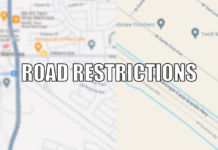
When it comes to decisions regarding housing at the time of retirement, most everyone is simply trying to decide where they want to live. Will they stay put or move to a new location? What kind of opportunities and amenities are they seeking?
Maybe they are considering downsizing their home, but initially, most are focused on a new, exciting lifestyle to chase their dreams.
Independent living
Our primary decision is usually: Where do we want to live? What do we want to do there? Who do we want around us? We may make age-related decisions, such as moving to a single-story home to avoid climbing stairs, but few are considering aging in place. After all, we’re healthy and searching for the “active adult” lifestyle! Your primary choices generally are:
- Remaining in your current home — a no brainer. You love your house, your neighbors and your community. There’s no need to change doctors, auto mechanics or where you shop. Besides, you’ll need that extra space when the kids and grandchildren come to visit.
- A new home in another community. This is generally a matter of chasing lifestyle — more sun, water sports, year-round golf or tennis, no snow blower, etc.
- Active adult/55+ retirement communities. You’ve decided you want to live in a resort-style community with other seniors. Residents typically live in purchased single-family homes, condos or townhouses. You’ve selected your new bathing suit, polished up your golf clubs and asked, “What is pickleball?”
- Senior apartments are becoming the rage. Flexibility is the key, with all the benefits and amenities of the more traditional retirement communities, except you are leasing and free to do something else after your lease runs out. A great way to test the lifestyle and location and still have the freedom to go elsewhere. Space constraints will probably require you to downsize your possessions.
- RV living. RV life gives you the freedom to explore all those places you’ve heard about and possibly identify where you would like to settle down after the adventure wears off. For most, this is a 1 to 2-year activity, but it can last as long as you want.
 Housing options with assistance
Housing options with assistance
Health problems, the availability of caregiver resources, financial security, loneliness, the lack of safe housing and the lack of family support often force retirees to reconsider where and how they will live during various stages of their retirement years. Accidents or sudden declines in health can dramatically change housing needs.
- Living at home with additional homecare support provided by agencies, friends or family. This is where a home properly prepared for aging in place pays off. Most people, according to AARP studies, want to stay in their own home as long as possible. COVID-19 drove home the value of living in your own home. Care can range from cleaning assistance, companionship, support with the activities of daily living (ADL) and even skilled nursing.
- Assisted living is residential living in a small group home or a large facility. It helps those in need of minor or limited assistance and 24-hour monitoring and provides an opportunity for socialization, meals, laundry, activities and coordination of medical services.
- Nursing homes are similar to assisted living, but medical support plays a larger role; rehab training, more frequent access to doctors and an RN always on duty.
- Memory care facilities offer specialized services and facilities to care for loved ones with dementia or related illnesses and protect residents from wandering away. Caregivers need special skills to deal with this horribly progressive disease.
- Skilled nursing facilities are in-patient rehabilitation and medical treatment centers staffed with trained medical professionals. They can provide the medically necessary services of licensed nurses, physical and occupational therapists, speech pathologists and audiologists.
- Combinations of the above are provided in some communities. Such care can be expensive but eliminates the need for residents to move to different communities as medical assistance and care requirements increase.
- Continuing-care retirement communities (CCRC) offer two or more of the above care options within one facility and program.
- University-based retirement communities are university-based like the new Mirabella Retirement Community offered at Arizona State University. This is a true continuing care retirement community integrated with lifelong learning through ASU.
- Life Plan Communities, the new name for CCRCs, offer an all-inclusive, maintenance-free and low-stress lifestyle that ensures maximum independence and a full social calendar. They provide peace of mind, security and predictability for your future by offering residential living, assisted living, skilled nursing and short-term rehabilitation services and memory care — all on one campus. Life plan communities help provide a secure and predictable solution to live out your life with confidence.
Other senior living alternatives
A plethora of other creative options exist where seniors share space and responsibilities with other people. These solutions have been responses to the needs for lower cost housing options, shared responsibilities/caregiving and social isolation.
- Living with your kids in their house. Moving in with your children can be a good solution under the right circumstances. Typically, it is most successful when the family can maintain some boundaries with mutual respect.
- Accessory Dwelling Units. Sometimes known as “granny pods,” these are separate, self-contained, smaller housing units located on the grounds of a single-family home. You have privacy but remain near your family. Zoning regulations are the main impediment to ADUs.
- Co-housing uses a shared decision-making model, and residents are expected to participate in chores and meal preparation. Co-housing is a shared option that is often intergenerational, mixing seniors and children resulting in more diversity and energy in the community.
- Home-sharing/roommates. Companies like Silvernest, Nesterly and Senior Homeshares, help seniors to rent out extra space and avoid isolation at the same time. In smaller communities, word of mouth suffices.
- Board and Care is the name often given to a small, assisted living-style home. Services may be limited but can include medication management, personal help and transportation.
- Intergenerational communities are a popular option in college towns, where seniors rent extra space to students. The advantage is that the senior gets extra income and has someone in the house for conversation and security, and sometimes light chores.
Ron Smith is a living-in-place advocate, a member of the Age-Friendly Maricopa Advisory Committee, a Certified Aging-in-Place Specialist and a Certified Living in Place Professional.
This column was first published in the October edition of InMaricopa magazine.
















